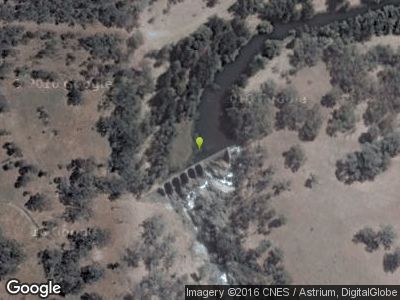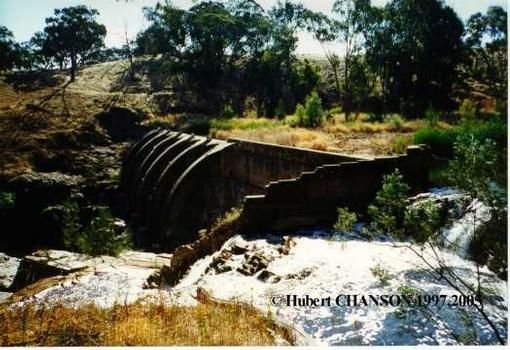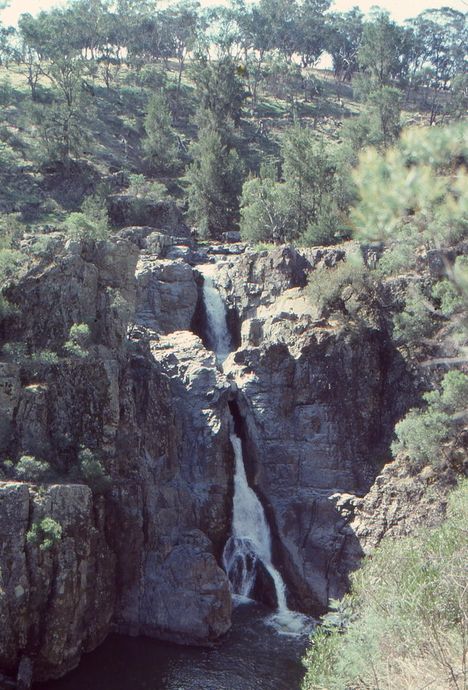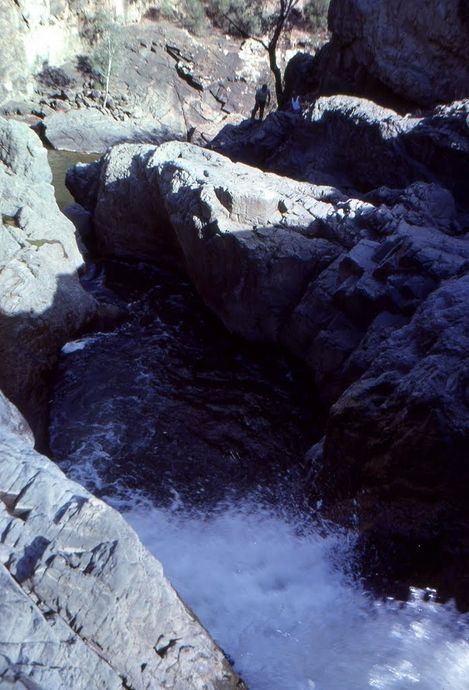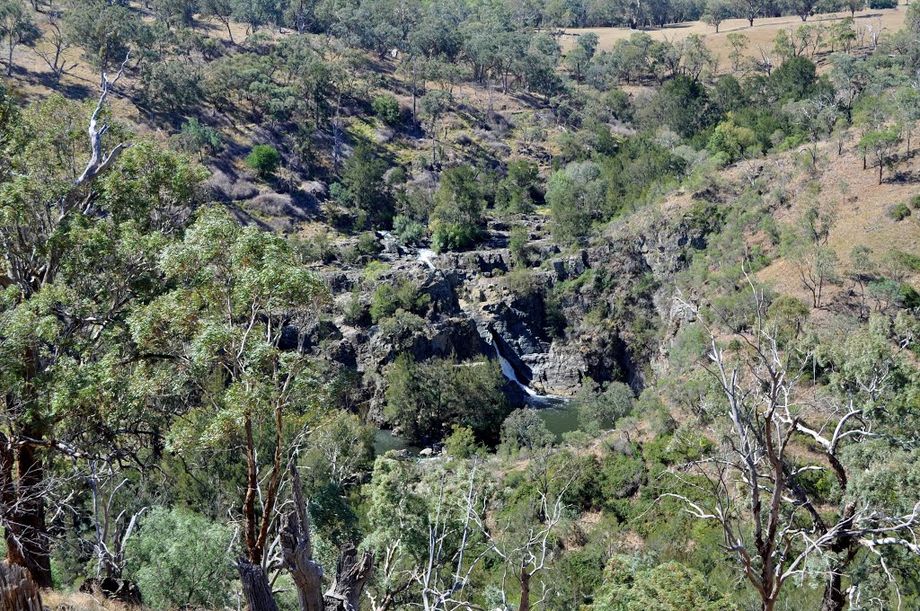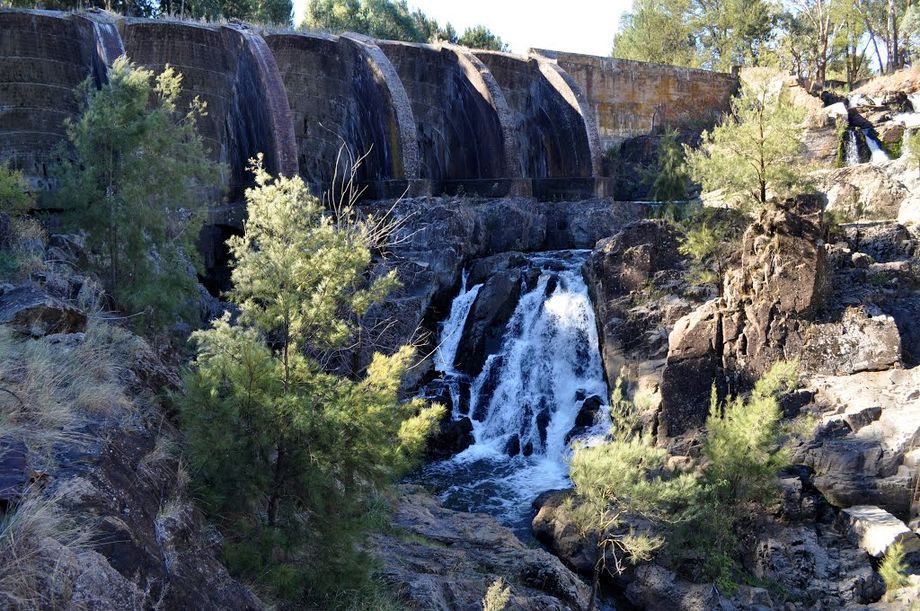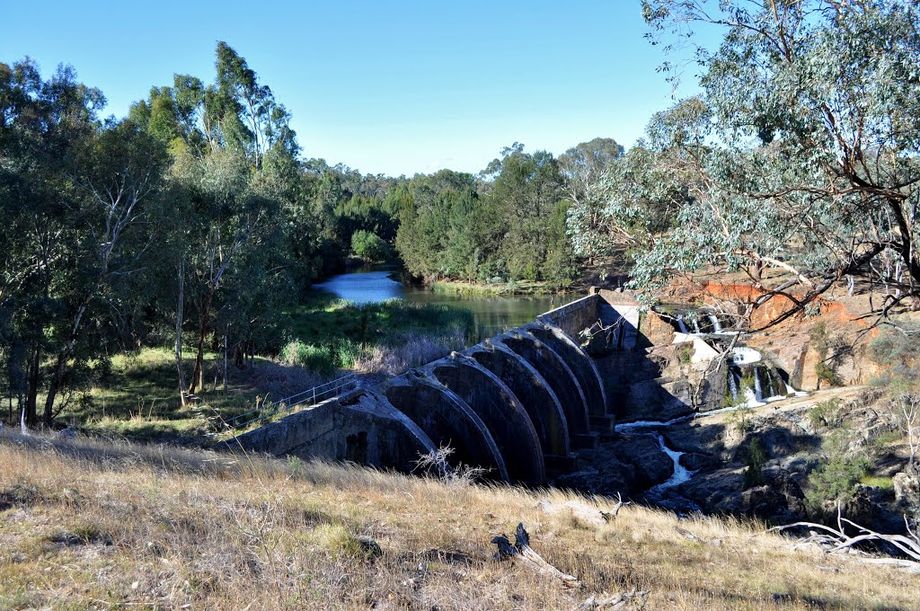The Junction Reefs Dam is part of the Old Junction Reefs Gold mine complex which today 2 August 2021 was re-opened to the General Public. The area is leased to a mining company who have large mining facilities on site. Todays Gold mine activities do not use the dam. Member for Bathurst Paul Toole said that he was pleased that OceanaGold, NSW Crown Lands and the Junction Reefs Land Manager Board were able to negotiate a Deed of Access to allow the community to come onto the Junction Reefs Reserve.
This reserve has become a very enjoyable camping and day visitor recreation area with basic facilities, generally open to the public, accessable by 2WD, with caution. The river in this area is normally a babbling brook but becomes a raging torant with large water releases from Carcoar Dam and when heavy local rain fall are sufficent. The fall in the river bed from Junction Reefs to below the Needles is substancial and with flow creates sections of severe white water.
Caution and very good preparations are essential. Check the Dam discharge and the Carcoar river gauge to determine river flows here.
The Belabula river continues towards Canowindra. Exit points below the dam before Canowindra, MAY be able to be accessed, with prior organisation, with land owners on the properties that have the river with in there property boundries. The propert of Millamolong would be the first contact point to arrange this access/exit . see http://www.millamolong.com.au/ . Permission MUST be obtained before venturing into this area.
Quote from -International Database for Civil and Structural Engineering----The dam is located at Junction Reefs, New South Wales, Australia, about 7 km North-West of Lyndhurst. It is located on the Belubula River, 500-m upstream of its confluence with the Mandurma Ponds.
Built to supply hydropower to the mining company. Four Pelton wheels were supplied in water by the reservoir.
Built between 1895 and 1897, completed in 1897, the Junction Reefs dam is a concrete-brick multiple arch dam: it is 18.3-m high with a 131-m long crest. There are 5 elliptical arches, with a 8.5-m span each and a 60-degrees lean, sitting on 6 buttresses. The dam foundation and the outside walls are made of concrete. The arches and buttresses are brick works. The original storage capacity was 2,467,000 m³. The dam was equipped with a large scour outlet system and a pipe inlet to supply the Pelton wheels. The scour tunnel was protected by an earth embankment and a screen system. The main spillway is an unlined rock stepped cascade on the left bank (4 to 8 steps) (Q ~ 38 m3/s) and an emergency overflow is located over the 5 arches (Q ~ 15 m3/s). Original drawings indicate that the spillway cascade was gated (SCHULZE 1897). Today it is ungated. The reservoir was silted considerably during the floods following the Great Drought of 1900-1902. Efforts were made to desilt the reservoir in the 1930s, by inserting explosives in the scour tunnel. They were not completely successful and the reservoir never regained its original capacity. The reservoir is fully silted today.
The Junction Reefs dam was the first multiple-arch dam in Australia. The second one was at Great Lake reservoir (Launceston, New South Wales, 1922). Other Australian multiple-arch structures include Ingleburn dam (Ingleburn, New South Wales, 1934) and Julius dam (Mount Isa, Queensland, 1976) . At Junction Reefs, brick construction was selected as the cheapest and quickest material to build for the arches , concrete being cheaper only for the foundation (SCHULZE 1897). [There was presence of good clay for brick-making near the dam site.] Curiously the original design included 6 arches but the final design had only 5 arches because of delays in the brick-making. The arches were designed in the same way as bridge (or culvert) arches, and the buttresses were calculated as bridge piers. ["The arches were calculated in the same way as bridge [...] and the buttresses as bridge piers" (SCHULZE 1897, p. 171).] Professor C. O'Connor commented that the arch shape and brick laying was unusual: the arch bricks were laid inclined parallel to the upstream arch face, while the buttress elliptical shape was not easily understandable. The Junction Reefs dam is well-known overseas (WEGMANN 1922, SMITH 1971, SCHNITTER 1994).
Participants
Design
Oscar Schulze (designer)
Contractor
Relevant Web Sites
Historical Development of Arch Dams. From Cut-Stone Arches to Modern Concrete Designs
Relevant Publications
Chanson, Hubert & James, D. P. Historical Development of Arch Dams in "Australian Civil Engineering Transactions [IEAust]", 2002 v. 43
Chanson, Hubert & James, D. P. Historical Development of Arch Dams in Australia, Department of Civil Engineering, The University of Queensland, Brisbane (Australia), ISBN 1864990791, 1998
Schnitter, N. J. A History of Dams, Balkema Publishers, Rotterdam (Netherlands), 1994
Schulze, Oscar Notes on the Belubula DamTrans. Australian Institute of Mining Eng., Vol. 4 [1897], Paper 52
Smith, N. A History of Dams, The Chaucer Press, Peter Davies, London (United Kingdom), 1971
Wegmann, E. The Design and Construction of Dams,John Wiley & Sons, New York (USA), 1922
Keep up to date via e-mail
Structurae Newsletter
About thisdata sheet
Structure-ID 20018215
Date created 28/10/2005
Last Update 29/07/2014
